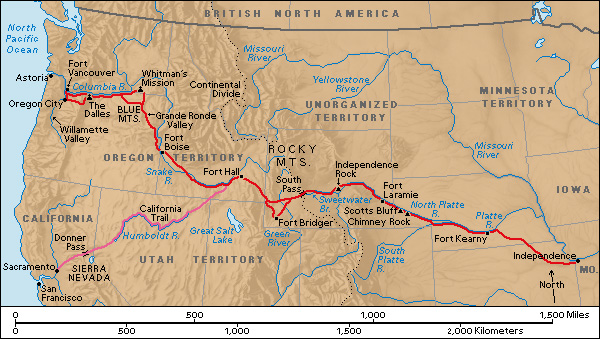National Trails System is a network of pathways and historic routes throughout the United States preserved for public enjoyment and in commemoration of significant periods or events in U.S. history. The system includes national scenic trails, national historic trails, national recreation trails, and connecting or side trails that provide access to these paths. The trails wind through rural, wilderness, and even urban areas. Three federal agencies—the National Park Service, the Forest Service, and the Bureau of Land Management—administer and coordinate the system.
National scenic trails provide opportunities for the enjoyment of outdoor activities and of spectacular natural beauty. The Appalachian National Scenic Trail, for example, extends for more than 2,140 miles (3,444 kilometers) from Maine to Georgia. The trail, open only to hikers, hugs the crests of the Appalachian Mountains. See Appalachian National Scenic Trail .

National historic trails mark significant periods or events in U.S. history. For example, the Oregon National Historic Trail preserves the 2,000-mile (3,200-kilometer) trail that was the pioneers’ chief route to the Northwest during the westward expansion of the 1840’s and 1850’s.

National recreation trails are shorter trails that can be used for a wide variety of outdoor recreational activities, including bicycling, cross-country skiing, hiking, horseback riding, and snowmobiling.
The U.S. Congress established the National Trails System in 1968. The system originally included scenic trails, recreation trails, and connecting or side trails. Congress added the category of national historic trails in 1978.
See also Forest Service ; Land Management, Bureau of ; National Park Service .
